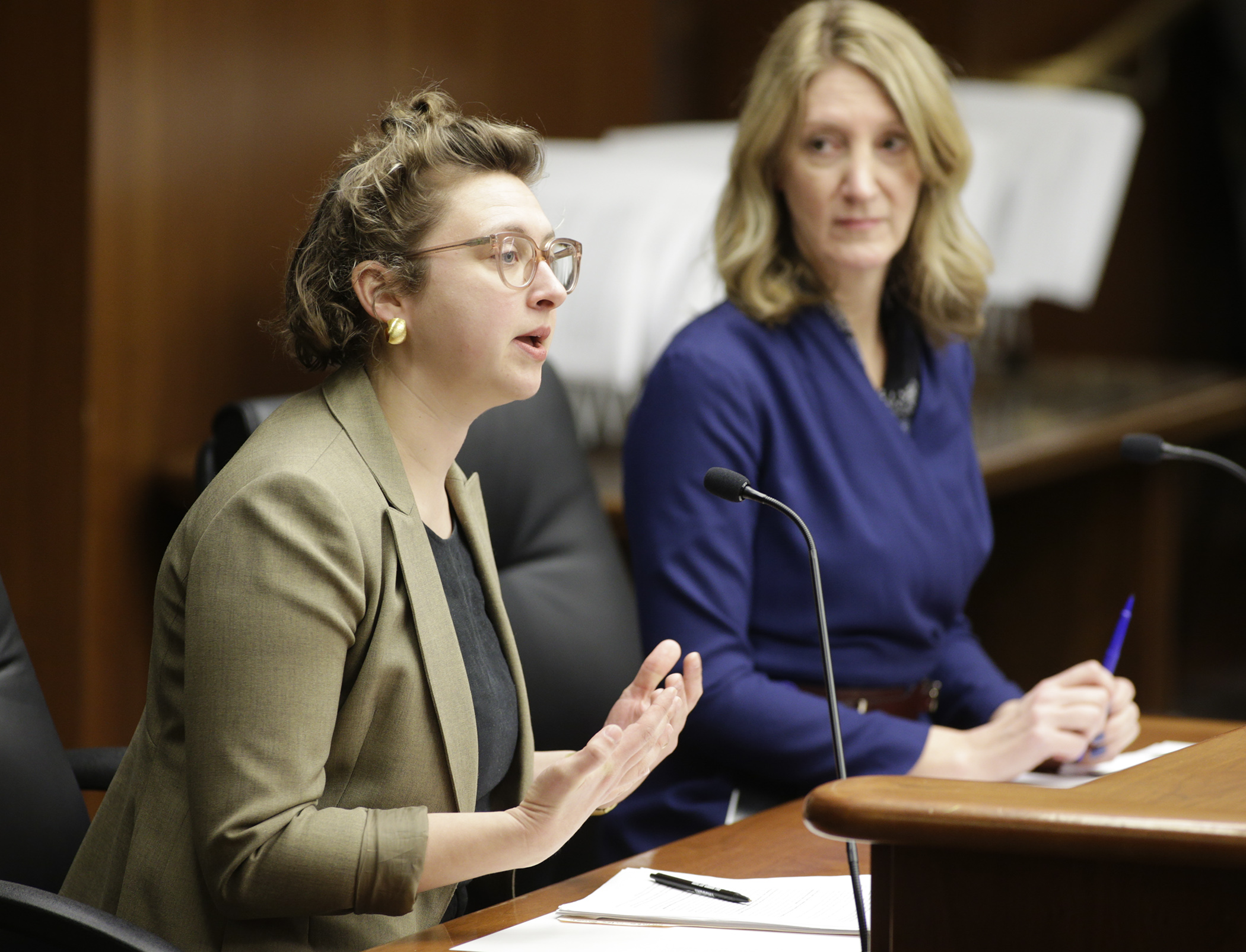Should inflation be included on both sides of the budget forecast ledger?

Will the state’s projected $1.3 billion surplus go up when the latest budget forecast is released Thursday morning? Down?
Will the numbers be accurate?
It depends how you look at things.
The November 2019 forecast indicates a projected $1.3 billion surplus for the current biennium, and a projected $1.92 billion surplus for the 2022-23 biennium, a number that would drop to $708 million if inflation were to be applied.
“I’m kind of tired hearing we have this huge surplus when we don’t account for inflation, and I think it will change a lot of our discussions here at the Capitol if we were more responsible,” Rep. Jennifer Schultz (DFL-Duluth) told the House Ways and Means Committee at an informational hearing Monday.
Inflation is currently provided on the revenue side of a budget forecast, but not all expenditures. HF150, sponsored by Schultz and co-sponsored by 11 DFLers, would require it be included for all expenses when a budget forecast is calculated. There is no companion in the Republican-controlled Senate.
“We should be consistent in how we do our forecast on the revenue and the spending side rather than being lopsided,” Schultz said.
“Putting together the state budget is an extraordinary task and it makes sense to use all the tools available,” said Clark Goldenrod, deputy director of the Minnesota Budget Project.
Between November 1991 and February 2002, inflation was included in state budget forecasts. But a 2002 law repealed the inclusion of inflation when projecting expenses. Schultz believes Minnesota is the only state to account for inflation in projected revenue, but not expenses.
“The decision not to include inflation on the expenditure side was an agreement between the Senate Majority Leader, Roger Moe at the time, and the House Majority Leader Tim Pawlenty,” said Rep. Lyndon Carlson Sr. (DFL-Crystal), the committee chair. “Both of them were running for governor and one way that they dealt with a deficit that was before the Legislature was not recognizing inflation. … It was a bipartisan agreement.”
Inflation is now a budget-planning tool for nearly two-thirds of projected expenditures in out years.
“There are some accounts, I think mainly in health and human services, that do have an inflationary adjustment,” Carlson said.
For example, according to budget documents, the November forecast projects nearly $51.24 billion in spending in the 2022-23 biennium, but the amount to be calculated for inflation is $34.35 billion.
“Special Education Aid is subtracted from the inflation calculation because an inflation factor is already cost based, so it adjusts as costs change and then also has a program growth factor,” according to a document from nonpartisan House Fiscal Staff. Debt service aid is subtracted because payments are set when the bonds are sold and property tax refunds are excluded because their formula adjusts for changes.
Officials putting together the forecast use current numbers to look at things like personal and business income to help determine revenue the state is expected to collect. They also try to determine how much people will spend, and on what.
However, there is no guarantee the rate of inflation will, for example, automatically result in the same percentage of personal wage growth, thus, affecting an inflationary estimate.
“We have additional revenue coming in because people’s income goes up, wages go up so our tax revenue is going up,” Schultz said. “Similarly, on our spending side, because of inflation and cost. And some entitlement programs are automatically adjusted for inflation in health and human services — but we don’t do that across the board. Because it’s a planning tool, a forecast, it doesn’t necessarily mean that that’s how our budget is going to be decided. It’s just better information for us going forward.”
The bill does not specify if the inflationary increase would be based on the Consumer Price Index or another factor; numbers that can sometimes vary by more than a full percentage point.
“I would hesitate to let [Minnesota Management and Budget] just subjectively decide one measure or another,” said Rep. Bob Vogel (R-Elko New Market).
Related Articles
Search Session Daily
Advanced Search OptionsPriority Dailies
Ways and Means Committee OKs proposed $512 million supplemental budget on party-line vote
By Mike Cook Meeting more needs or fiscal irresponsibility is one way to sum up the differences among the two parties on a supplemental spending package a year after a $72 billion state budg...
Meeting more needs or fiscal irresponsibility is one way to sum up the differences among the two parties on a supplemental spending package a year after a $72 billion state budg...
Minnesota’s projected budget surplus balloons to $3.7 billion, but fiscal pressure still looms
By Rob Hubbard Just as Minnesota has experienced a warmer winter than usual, so has the state’s budget outlook warmed over the past few months.
On Thursday, Minnesota Management and Budget...
Just as Minnesota has experienced a warmer winter than usual, so has the state’s budget outlook warmed over the past few months.
On Thursday, Minnesota Management and Budget...